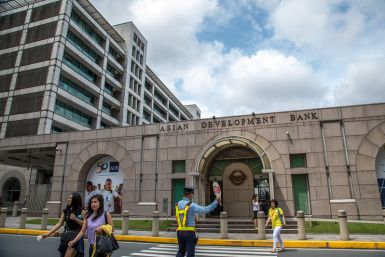Top 10 Asanas to Combat Fibromyalgia Symptoms
Top 10 Asanas to Combat Fibromyalgia Symptoms
A medical disorder common, especially among women aged 20 to 50. Individuals affected by the disease experience long-term, widespread pain and tenderness in the joints, muscles, tendons and other soft tissues- that's Fibromyalgia. Three to five percent of the population suffers with this condition with over 80% being women. With regular yoga practice, pain was reduced by an average of 24 percent, fatigue by 30 percent and depression by 42 percent. Symptoms of fibromyalgia
- Pain 11 of 18 specific tinder points. Muscle aches all over the body. Chronic fatigue. Insomnia or other sleep disorders. Depression and anxiety. Irritable bowel syndrome. Tension headache and migraine headacheA mounting body of literature recommends that treatment for fibromyalgia (FM) encompass medications, exercise and improvement of coping skills.According to a research conducted at Oregon Health & Science University, yoga exercises may have the power to combat fibromyalgia. In the study, researchers enrolled 53 female study subjects previously diagnosed with fibromyalgia. The women were randomly assigned to two research groups. The first group participated in an eight-week yoga program, which included gentle poses, meditation, breathing exercises and group discussions. The second group of women -- the control group -- received standard medication treatments for fibromyalgia. Following completion of the yoga program, researchers assessed each study subject using questionnaires and physical tests. The results were then compared with testing results obtained prior to the yoga classes. The members of the control group underwent the same evaluations. In addition, each participant in the yoga group was urged to keep a daily diary to personally assess their condition throughout the entire program.
Comparison of the data for the two groups revealed that yoga appears to assist in combating a number of serious fibromyalgia symptoms, including pain, fatigue, stiffness, poor sleep, depression, poor memory, anxiety and poor balance. Another study, Yoga for Managing the Chronic Pain of Fibromyalgia demonstrates the great benefits of gentle Iyengar-based Yoga for a person with chronic musculoskeletal pain. This study details this patient's many improvements - from pain relief to reduced body weight & medication needs. Yoga Asanas to Manage FibromyalgiaIyengar based program suggests to begin with extremely gentle restorative asanas & breath awareness. Listen to your body and proceed slowly, with the following asanas. Apanasana (knees to chest):
- Starting in the lying rest position, take the feet off the floor and bring the thighs to a vertical position. Place the hands on the knees and without taking your head off the floor, exhale, while bringing the knees towards the torso. Try to let the abdominal muscles do most of the work, letting the hands help a little toward the end of the movement. On the inhalation, allow the knees to move away to the starting position, while bringing the arms overhead to the floor behind you. Repeat slowly 6 times, being sure to breath out as the knees come towards the body and breath in when they move away.Supta padangusthasana (hand to big toe) with strap Place a mat against a wall. Sit in Dandasana (staff pose) facing the wall. Keep a yoga belt beside you. The soles of your feet should touch the wall comfortably, with your toes pointing upward. Press both your palms down on the mat. Lower your back onto the mat, supporting your torso on your palms until your head rests on the mat. Bend your right knee, and bring it to your chest. Keep your left sole pressed against the wall. Loop the belt around the sole of your right foot. Hold one end of the belt in each hand. Make sure that you hold the yoga belt as close to your foot as possible. This opens your chest, and keeps your breathing regular and even. Keep your extended leg pressed down on the mat. Inhale, and raise your right leg until it is perpendicular to the floor. Hold both ends of the belt with the right hand. Place your left arm beside your left arm beside your left hip. Press the left foot against the wall, and the left thigh on the mat. Stretch your right leg up further, simultaneously pulling your toes toward you with the belt. Feel the stretch in your right calf. Keep your left leg firmly pressed to the floor. Do not bend either knee or allow the left leg to tilt out. Initially, stay in this position for 20 -30 seconds. With practice, increase the time to 1 minute. Repeat the pose on the other side.Setu bandhasana (bridge) Lie on your back centered on your mat. Bend both knees and bring the feet up as close to your buttocks as possible. Place the feet on your mat hip width apart. Position your palms facing down aligned with your hips. Lie supine, facing the ceiling with an extended neck. Keep your feet parallel or slightly angled with the balls of the big toes closer to each other and the heels slightly more apart. Draw in your shoulder blades as you lift and push them away from the center of your body and down towards the mat. At the same time, firm up your thighs, knees and calf muscles, but keep your belly soft. Throw your head back, gently, and gaze either at the ceiling or, better still, at the wall behind. Keep stretching your legs forward and try to keep your feet flat on the floor. Concentrate on the rise and fall of your belly as you continue to breathe normally. At first you may not be able to hold the pose for any more than 10 - 15 seconds. But, given the time, you will gradually be able to go up to one minute , even. To exit the pose, exhale deeply and gently take your elbows further apart and let your butt and back sink onto your mat. Then rest your neck and head and lie inShavasana (Corpse Pose) for a few seconds, maybe even up to a minute, depending upon how long you held the pose. Never try this pose twice in consequence.
Bhujangasana (cobra)
- Lying down on your tummy, feet together. Place your hands beneath your shoulders, finger lined up with the end of the shoulders. Hold the elbows close to your sides. As you breathe in, begin to raise your forehead, nose and chin, drawing the head back to where it still remains comfortable. Lengthen through the neck. Continue to lift the chest upwards and back, being aware of each of the vertebra as they curve, one by one, into the backbend. Press your pubic bone into the floor as you extend up through the crown of the head. Lengthen the tips of the toes away from the hips. Press down on the palms of the hands to lengthen the stretch from the hips up through the sides of the ribs, keeping the shoulders back and down away from the ears. Lift the breastbone up towards the ceiling. Breathe normally as you hold the posture. Come out of the pose with as much awareness as you moved into it. Exhale as you begin to lower the chest back down, one vertebra at a time, lastly tucking under the chin, nose, and forehead. Strengthen the back muscles by activating them, so they help you lower the chest back down to the floor. Repeat 3 times, then rest and relax using the complete breath to replenish the body with oxygen and energy.Salabasana (locust) with palms upturned secondary to severe forearm restriction Lie on your front. Rest your chin on the ground, then move it forward as much as you can, so that your throat lies almost flat. Put your arms by your sides, then push your hands under your body, and make them into fists or clasp them together. Bring your elbows as close together as possible. Inhale as you lift one leg. Hold this position for at least 10 seconds, then exhale while lowering your leg and repeat the pose with your other leg. Practice it 3 times on each side. Chin position: The further forward you push your chin, the more your spine can stretch and the more you will gain from this asana. Lie with your chin out, as in the Half Locust, then take 3 deep breaths. On the third, lift both legs off the ground. They may not come up far at first, but with practice you may be able to lift them much higher. Hold for as long as you can, then lower your feet. Repeat twice and then relax. Up and Up: With practice, you will be able to raise your legs higher. Eventually, you may even be able to lift your body vertically.
Ardha dhanurasana (1/2 bow) with tactile assistance and strap• Lie on your belly, with the legs together or a few inches apart. Bring the chin to the floor and slide the right arm along the floor, over your head with the palm facing down.• Bend the left knee and reach the left hand back to hold onto the left heel or ankle.• Inhale and kick the left foot into the arm to lift the left leg, head and chest off of the floor. Keep the neck in line with the spine, looking down at the floor. Lift the right arm off of the floor, keeping it parallel to the floor.• Breathe and hold for 2-6 breaths.• To release: slowly exhale and lower the leg, arm, head and chest down to the floor.• Repeat on other side. Balasana (child's pose) with head on blanket and arms at side• Kneel on the floor, and then sit directly onto your heels.• Shift your knees until they are a little more than hip-width apart.• Bend forward at the hip; bring your chest to rest between your thighs.• Keep your buttocks in contact with your heels and rest your forehead on the floor. If this is uncomfortable, rest your forehead on a cushion or folded blanket-make sure it is high enough for you to be comfortable.• Stretch your arms out in front of you on either side of your head. Lengthen the muscles as far as you can, really give a good stretch! Then slide your arms back to your sides, palms up and relax.• Remain in this pose for as long as possible. Breathe deeply and relax into the posture. Chakravakasana (Cat /cow) with blocks under hands• Parallel hands and knees. Breathe in.• As you breath out, curve your back over so it is as abounds as possible, your tailbone is tucked under, and your head is dropped down, imagine that you are curving the front of your body over a big ball. Stay in this position for a few breaths.• Breathing in, arch upward, so that the top of your head and your tailbone are pointing at the ceiling and your back is dropped in curve. Now imagine that the ball is resting on top of your back, in the curve your back is making. Try to make your waist long, and draw your shoulders away from your neck. Stay there for a few breaths.• Return to the starting position. Repeat. Continue for 5-10 breaths, moving the whole spine. After your final exhale, come back to a neutral spine Adhomukha svasana (downward facing dog) at the wall or with a chair• This is a good posture to begin with for those who are mobile but have balance problems and for those who are weak in the arms or legs. Stand with your back to the wall with a chair in front of you, turned so the seat faces away from the wall.• Fold a sticky mat into quarters, place it on top of the chair back, and cover it with one or two blankets. With your heels against the wall, bend at the hips and put your hands on the chair seat.• Place the bottom of your pelvis, below the navel, onto the padded chair back. Deepening the bend at the hips, rest your chest on the chair seat, your hands on the floor.• Your feet may go up the wall or be elevated on blocks, depending on your height and flexibility. Savasana (corpse) with bolster under knees.• Spread the mat on the floor. Place a bolster on the mat, with its long sides parallel to the long sides of the mat. Sit in Dandasana (Staff pose) with the short end of the bolster against your buttocks, and place the folded blanket on the far end. If you have osteoarthritis of the knees or if your legs are feeling tired, place a bolster under your knees.• Lower your back, vertebra by vertebra, onto the bolster until your head rests comfortably on the folded blanket. Position your buttocks evenly on the centre of the mat. Spread out your arms to the sides, palms facing up, and rest them on the floor.• Straighten your legs and stretch them evenly away from each other, without disturbing the extension of your waist. Exhale, focusing on your breathing, then lift and stretch your diaphragm, keeping it free of tension. Keep your arms at a comfortable distance from your body. If they are placed too near or too far away, your shoulders will lift off the bolster.• Stretch your shoulders away from your neck. The centre of your back should be on the centre of the bolster, keep your abdomen soft and relaxed. Expand your chest and relax your throat. Until you feel a soothing sensation in the neck. Ensure that your head does not tilt back. Relax your facial muscles and your jaw. Do not clench your teeth.• Keep your breathing smooth and free of tension, but do not breathe deeply. Let your eyeballs relax into their sockets, and allow external surroundings to recede. Feel the energy flow from your brain to your body body as the physical, physiological, mental, intellectual, and spiritual lanes come together. Stay in the pose for 5 - 10 minutes. Work these poses into your yoga routine today so you can start minimizing your fibromyalgia symptoms.
Article provided by Women Fitness http://www.womenfitness.net






